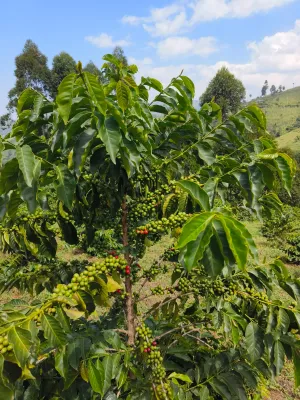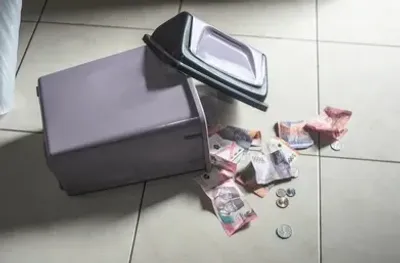

Kenyan President Uhuru Kenyatta
Kenyan President Uhuru Kenyatta has instructed key government ministries to identify mechanisms for reviving the nation’s cotton production, which could include growing the genetically modified Bt cotton.
The announcement follows the government’s approval last summer of an environmental assessment that authorized the national performance trials that are required prior to commercial release of Bt cotton. The Kenyan government, in collaboration with farmers, planted the pest-resistant Bt cotton in field trials last June, marking a milestone in a 15-year research effort.
One of the biggest holdups to the advancement of biotechnology in Kenya has been the absence of political good will. But the performance trial approval and President’s speech seem to signal a shift.
“Cotton farming was once a major source of income and livelihood for many people in the region,” Kenyatta said in an Oct. 20 speech in Western Kenya during Mashujaa Day celebrations – a public holiday to honor Kenyans who have contributed in the struggle of independence. “As such, I have instructed the ministries of health, agriculture, and trade, industry, and cooperatives to work together and come up with a quick mechanism to revive the production of cotton, including the possibility of farming Bt cotton.”
Dr. Charles Waturu, director of the Horticulture Research Institute, observed that the country has been producing less cotton due to bollworm infestation. Kenya now annually produces 20,000 bales of cotton – each weighing 184kg – against a demand of 140,000 bales, requiring the country to import the deficit. With Bt cotton, Kenya can produce 260,000 bales annually, he said.
The President also hailed scientists and innovators for their research and positive impact on society. In his speech, Kenyatta envisioned a situation where farmers will prosper and produce more food for their families.
“We will do better in supporting our farmers, whose hard work is the backbone of our country’s economy,” Kenyatta said.
He had previously outlined a “big four” agenda that encapsulates food security and nutrition, universal health coverage, affordable housing and enhanced manufacturing.
Gilbert Nakweya, a development communication graduate in Western Kenya, said the President’s commitment to revive the cotton industry is good news not only to the people of that region, but Kenya at large.
“Presidential pronouncements give scientists the courage and conducive environment to advance their research and come up with technologies to revive the cotton industry,” Nakweya said.
Other countries that adopted Bt cotton long ago, such as Sudan and South Africa, are already reaping the benefits, he noted. “We should fully adopt Bt cotton and increase investments to spur the research and development of the industry,” Nakweya said.
Zola Kazira, a project management professional with Integrated Community Organization for Sustainable Empowerment and Education for Development (ICOSEED) Kenya, an NGO working with cotton farmers, said Bt cotton will contribute to better yields in Western Kenya and help revive the textile industry. Pest control, especially to combat the bollworm, accounts for about 30 percent of a farmer’s total cotton production costs, contributing to rural poverty, she noted.
Bt cotton will revive the textile industry and contribute to its sustainability, Zazira said. The president’s comment gives hope to the many cotton farmers that are just about to give up, or already have, she concluded.
Analysis
The latest developments on BT cotton are likely to add pressure to Uganda’s Parliament which is failing to pass the Bill on Biotechnology and Biosafety that has been with them for nearly a decade.
Because of the porous nature of borders in the region, many anticipate that it will not take long for BT cotton once released by the Kenyan government to its farmers, to find its way to Ugandan farms. This is especially so because Cotton is a self-pollinating crop, meaning that ginners can easily sell the seed to prospective buyers.
But in the absence of a clear regulatory regime in Uganda, farmers who may eventually adopt BT cotton without clear regulations, may later run into problems of pest-resistance. According to scientists, in order to reduce resistance of the BT crop to common pests such as the Cotton ball worm, farmers are advised to plant non-BT crops around the BT farms as a ‘refugee’ to for the pest.
Uganda used to be a major cotton producing country back in the 40s up to the 70s. The crop, through its vast value chain that spans textiles, animal feeds, soap, is credited for having triggered industrialisation in Uganda. Cotton farming was the major reason for the construction of the railway line to Namasagali in Eastern Uganda.
Kenya is not alone in fast-tracking the adoption of cotton. In Ethiopia the government led by new Prime Minister Abiy Ahmed has abandoned its previous hardline stance against biotechnology by approving the environmental release of BT cotton. The move is also seen as a strategic intervention to support the country’s ambitious industrialisation drive using quality cotton to spur its massive garments factories that are set to be established in its vast new Hawassa industrial complex.














Sunrise Reporter
Leave a Comment
Your email address will not be published.